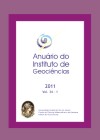Biopolymers, Total Organic Carbon and Sulphur Relationed to Bacterial Activity on Superficial Sediment of Paraíba do Sul Fan, RJ-Brazil
DOI:
https://doi.org/10.11137/2011_1_33-45Abstract
The Paraíba do Sul River basin is located on the Rio de Janeiro-São Paulo axis, an area of great demographic density and intense industrialization. This work aimed to perform a quali-quantitative analysis of the organic matter (biopolymers, total organic carbon and sulfur) and the bacterial metabolic state in the estuarine-deltaic superficial sediments of the Paraíba do Sul River, relating them to their granulometric distribution. On average, 65.5% of sediments were classified as sandy and poor in carbon and sulfur, with average concentrations of 0.71% and 0.04%, respectively. The C:S element ratio indicates that the environment is predominantly oxidizing, which is coherent with the strong fluvial influence of such a middle-sized river over the estuary. The carbohydrate (average of 2075.93 μg C/g), protein (average of 25.70 μg C/g) and lipid (average of 363.10 μg C/g) biopolymers also presented concentrations lower than those found in other environments. Based on these low concentrations, the environment was classified as meso-oligotrophic. The CARBOHYDRATE:TOC ratio evidenced the impact from anthropic activities, more specifically from the input of domestic effluents along the entire river's course and from the sugar industry, strongly present on its lower course. The bacterial community responsible for organic matter hydrolysis is predominantly anaerobic and facultatively anaerobic, implying in loss of nitrogen to the atmosphere (denitrification) and production of sulfides (sulfate reduction), and the low PROTEIN:CARBOHYDRATE ratios reflect this loss of nitrogen (present in the protein compounds), considering the occurrence of denitrifying bacteria. The bacterial carbon values found are high (3.29 μg C/g) and they are also probably due to the impacts above describedDownloads
Download data is not yet available.
Downloads
Published
2011-01-01
How to Cite
Silva, F. S. da (2011) “Biopolymers, Total Organic Carbon and Sulphur Relationed to Bacterial Activity on Superficial Sediment of Paraíba do Sul Fan, RJ-Brazil”, Anuário do Instituto de Geociências. Rio de Janeiro, BR, 34(1), pp. 33–45. doi: 10.11137/2011_1_33-45.
Issue
Section
não definida
License
This journal is licensed under a Creative Commons — Attribution 4.0 International — CC BY 4.0, which permits use, distribution and reproduction in any medium, provided the original work is properly cited.















